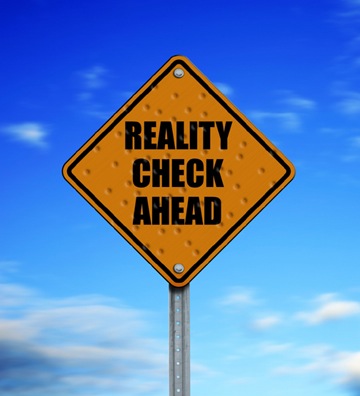b-screeds
Let’s start with some talk about the audience for legal information. Such conversations are rare. Usually people in the open-access-to-law world jump right in at the high end of why. We make big statements about freeing the law, or protecting rights, or keeping government accountable. These are all very important things, but they are also a little abstract, disengaged, lacking in detail. Here I want to think about what people are really doing with law they find online. Compared with ringing statements made at ribbon cuttings and in press releases, this is pretty dull stuff.
Let’s start, too, with the inevitable disclaimers: I can only talk about what I can see. My vantage point is that of a provider of limited (but important) collections of American caselaw and statutes, and a certain amount of commentary in the form of Wikipedia-like articles on legal topics or analyses of current cases. Someone doing the same kind of work with, say, the recently-constructed and published laws of a developing country would see things very differently. Someone doing it under a different legal system, or in a place with less jurisdictional complexity or with a different economy would too. And like everybody else who tries to analyze Web behavior, I’m peering through a keyhole that’s covered with gauze. I’ll stipulate the limitations of Web statistics; they’re very poor absolute measures of anything (though they have a lot of relative value). At the LII we learn more from mailing lists and feedback from readers, and a lot from links to the site. Most our examination of our audience has been done to satisfy short-term goals, provide statistics for reports, or satisfy momentary curiosity. There is, by the way, a desperate need for systematic study of what’s going on on our site (and any interested social scientist can take this as an invitation to get in touch with us). What you’re about to read is a synthesis of scattered observations and anecdote that involves limited samples. But we have to start somewhere.
That said, let me make five observations about the audience for legal information:
The audience for legal information is not bipolar.
People — and by “people” I mean “lawyers” — generally believe that there are two consumers of legal information. The first is a “law person” — a judge, lawyer, academic, or student — who makes sophisticated professional use of caselaw, statutes, regulations, treatises. The other is the “man in the street”, someone who is having an episodic, traumatic encounter with the legal system: getting crushed by debt, getting divorced, getting arrested. This leads to a misconception: the idea that both the literature and the audience for it are sharply bifurcated. On the one hand, there is “legal information”, a specialist literature that the man in the street doesn’t want and couldn’t understand in any case. On the other, there is what I suppose one might call “advice to the law-lorn”, simply-written, presented in bite-size chunks via newspaper or television, and providing orientation for those participating in one of the episodes mentioned earlier, or perhaps trying to solve a consumer-protection problem.
A thoughtful look at the Americans with Disabilities Act shows that this just ain’t so. It’s written understandably — so much so that it can be understood by the bowling-alley operators, municipal building inspectors, and architects that it affects. Yes, there is caselaw interpreting it. But the language is easy enough to understand if you are a person who is trying to figure out what it most likely requires of you. And, no question about it, this law is of interest to a lot more people than lawyers, and for professional rather than personal reasons. It’s also an economic engine: think of all the carpenters and builders who have retrofitted ramps and lifts to existing structures. There are a lot of people out there who make use of this one law in their professional lives, and there are a lot of laws like this one. There are, for example, over 80,000 dry-cleaning businesses in the United States, most of them family-owned, and over 120 Federal regulations that pertain to the use of a single dry-cleaning chemical. And there are the usual almost-lawyer suspects: tax accountants, police officers, government officials. It’s a spectrum, lawyers at one end and “men in the street” at the other, with a vast majority within spitting distance of the middle: people who make relatively continual professional use of law but are not legal professionals.
Probably this was always the case, even before the Internet put the spotlight on it. Nolo Press has always catered to the small-business segment of this crowd, and a lot of trade papers have occasional columns that treat legal subjects for the benefit of whatever the trade might be. Tax-law aids and publications abound — there’s nothing surer. Federal agencies write field manuals and put up web sites that summarize relevant law for their officials and for the public. But as with a lot of other things, the Internet concentrates diffuse interest into prominence. It’s still foggy; the edges are indistinct and the contours shift a lot. But that audience of non-lawyer professionals is definitely there, and it’s important. Sure, other audiences are there: our secondary materials reflect their presence. Materials on bankruptcy, civil rights, and divorce are among the most-used resources in our WEX legal encyclopedia — but, interestingly, contracts and civil procedure come very close to divorce in popularity. And, by contrast, one of the highest time-on-page rankings goes to a Spanish translation of our page on partnership law.
The Internet audience for law is less interested in caselaw than it is in regulations and statutes
 Lawyers — and legal academics even more so — see the world through the lens of caselaw. The rest of the world starts with regulations. I once asked a group of law students to re-imagine the bromide “Ignorance of the law is no excuse”. I asked them to tell me who the ignorant person might be and what they might be ignorant about. Fourteen of fifteen imagined, generally, someone representing themselves in court on a felony charge. I’ll say more about pro se in a minute, but it’s the lone dissenter I’m interested in right now. He was a German lawyer, here to study American law, who listened very politely to all the other students and then announced that, to the contrary, it was probably somebody having a problem with a regulation.
Lawyers — and legal academics even more so — see the world through the lens of caselaw. The rest of the world starts with regulations. I once asked a group of law students to re-imagine the bromide “Ignorance of the law is no excuse”. I asked them to tell me who the ignorant person might be and what they might be ignorant about. Fourteen of fifteen imagined, generally, someone representing themselves in court on a felony charge. I’ll say more about pro se in a minute, but it’s the lone dissenter I’m interested in right now. He was a German lawyer, here to study American law, who listened very politely to all the other students and then announced that, to the contrary, it was probably somebody having a problem with a regulation.
He was right. The Internet audience cares vastly more about what it sees as the rulebook, and is not for the most part playing for stakes that justify deep research into interpretation. You can dismiss that approach as naive — if you believe that everyone who wants to learn about a rule is likely to be an exception to it, or that all rules are ambiguous to the point where relying on their text is dangerous. But in fact the rules are, much of the time, not so vague, and the Internet audience is assessing risk and reckonability. So, much of the time it concentrates first on regulations, and then on statutes, and only then on caselaw. And even when it comes to caselaw they are more likely interested in what has been said than in how it was said. Only about 15% of those who read Supreme Court opinions on our site read the majority opinion after reading the summary (syllabus) prepared by the clerk.
These notions are reflected in interesting ways in our statistics and in our link census. If you count users of the LII’s US Code by country, the ordering roughly parallels trade volume with the US (for a variety of complicated reasons it is not an exact match). Usage tends to track business hours, indicating professional use. The highest page-per-visit counts come from businesses. A look at our link census similarly reflects non-lawyer professional usage, particularly of statutes.
And by any account statutes and regulations are important. Transparency of trade law is very important to developing economies; the international investment community wants to know that there are rules, and what they are. And, as the World Bank “Doing Business” reports (particularly the 2004 edition) repeatedly recognize, street-level regulatory burdens have huge effects. The 20 worst economies in the world are the ones where it is hard to form and dissolve a business, to hire and fire, and to enforce commercial contracts. By contrast, the vast majority of judicial opinions affect only the parties. The question of why we have traditionally placed so much emphasis on access to caselaw will be explored in a future post.
The Internet audience is not trying to replace lawyers, or harm itself.
 As long ago as 1628, Sir Edward Coke suggested that legal materials should not be published in English “lest the unlearned by bare reading without right understanding might suck out errors, and trusting in their conceit, might endamage themselves, and sometimes fall into destruction.” Worries about sucking, endamaging, and destruction persist to this day, though the conceit is arguably heavily concentrated on the other side of the issue. There are echoes of this in the Michael Kirby speech I quoted last week, and outright ranting in a recent comment responding to a listing of free-to-air law sources in a blog run by the Wall Street Journal:
As long ago as 1628, Sir Edward Coke suggested that legal materials should not be published in English “lest the unlearned by bare reading without right understanding might suck out errors, and trusting in their conceit, might endamage themselves, and sometimes fall into destruction.” Worries about sucking, endamaging, and destruction persist to this day, though the conceit is arguably heavily concentrated on the other side of the issue. There are echoes of this in the Michael Kirby speech I quoted last week, and outright ranting in a recent comment responding to a listing of free-to-air law sources in a blog run by the Wall Street Journal:
Citizens do not need access to this kind of information. This is as bad as the WSJ publishing data on hospital/doctor errors and malpractice rates!! It is irresponsible for the WSJ to publish information about these sites!! Please remove this article.
I shudder to imagine what sort of government this guy would want, but let’s stay with this idea of reckonability. The streets are not littered with the corpses of those who have self-prescribed after reading WebMD, and I very much doubt that courtrooms and jails will be flooded with pro se plaintiffs and defendants (the effect of abusing WebMD, though, may be happily Darwinian rather than drearily Dickensian). Here’s the thing — probably THE thing, in fact: people who are using the Web to look up law are doing so in the interest of making the legal system more predictable. They are trying to get a general idea of what to do. Just as people do when they seek medical information, they are reality-checking the advice of professionals, or perhaps the advice of friends, and they are trying to foresee and prevent the harmful interaction of prescriptions made by the gaggle of specialized advisors that surrounds each of us these days. They are not seeking to replace lawyers, though they may be trying to understand them, and make sure of their advice.
Richard Susskind has remarked the existence of a “latent legal market” that is unfulfilled because the legal system is a forbidding realm whose gates are built and guarded by the inhabitants themselves. In some ways this mirrors longstanding notions about “preventive law” as an idea that could be as lucrative for lawyers as preventive dentistry has been for dentists. If you accept Susskind’s idea, and I do, the availability of legal information should have the opposite effect: we will see more, rather than less, routine use of professional legal services as people come to accept and understand the need for them.
The Internet audience is not doing legal research as lawyers understand it
Which brings us to the next point. Dan Dabney, the creator of West’s KeyCite feature, makes a perceptive observation about legal research. A somewhat compulsive person wanting to know, say, the specific heat of tungsten might go to two or three web sites (an ordinary person would go to a single website that looked authoritative, but let’s make allowances for any scholars who might be reading this). Once they have discovered a few sources that agree, they assume the answer is good enough. Lawyers doing legal research, by contrast, visit every source they can possibly imagine in the hope of finding one that will support their argument. Or at least they do if they can afford it. John B. West himself set the stage for this idea in 1889, when he responded to complaints about the over-inclusiveness of the West reporters by saying:
It is one of the greatest merits of the National Reporter System that it gives all the cases. Some of our critics call it a ‘Blanket System,’ and we are disposed to accept the analogy. No policy of insurance is so satisfactory as the blanket policy; and that is the sort of policy we issue for the lawyer seeking insurance against the loss of his case through ignorance of the law set forth in the decisions of the highest courts. [23 Am. L. Rev. 396, 406-407 (1889)]
Comprehensive research is necessary to lawyers working in an adversarial system on behalf of clients who can pay for their time. Those interested in simple reckonability — who are doing research as a form of risk management, or trying to understand those who are working on their behalf — do not need so much. Nor do they seek information in the same way as lawyers do. 
Or do they? One study of lawyer information-seeking behavior — there are surprisingly few — notes an idea-forming stage during which lawyers prefer to deal with a limited number of sources until they know for certain where their argument is headed. That is what legal-research teachers call framing the question or formulating a research strategy, and in some ways it is not so different from what interested laypeople do. Both groups are trying, as efficiently as possible, to compose a mental map that will cover the surrounding terrain. The lawyer goes on to sketch a directed path to a known destination; the layperson contents himself with general knowledge of which pathways are possible and perhaps which landmarks and obstacles one might encounter along the way. Either or both might then rely on a more specialized guide — a specialist — to reach their specific destination. The layperson neither requires nor expects a step-by-step mapping in detail, or too much discussion of transportation choices, portages, and byways.
The overall point is that ultimate comprehensiveness of sources may not be as desirable as we are disposed to think. The lay audience for public information is doing a different kind of research.
The Internet audience uses law they find in unexpected ways
A final interesting but perhaps less important point. Legal research is not the only use of the legal infosphere, nor is the use of hyperlinks limited to crossreferencing or navigation. We’ve observed a tendency to use them to make assertions about legal relationships. So, for example, a popular fan site for the “Lord of the Rings” carries over 25,000 links to Title 17, the law of copyright — presumably as a declaration that the numerous photos and other movie material found there comes under the heading of fair use. Similarly, we get a lot of links from porn sites to the child-porn statute — an assertion about what the site operators are not doing. 18 USC 704, which deals with the appropriate use and reproduction of military medals, is used by Wikipedia and others to show that what they are doing is within the law. This is an interesting trend, and like many others mentioned here, needs further study. It’s also one of the oldest Web capabilities; we haven’t even started to talk about social tagging, or wikis, or other novel ways of presenting and interacting with legal text.
Finally
I’m written out, for now. What does all this add up to? One answer is “not much, yet”. To really understand the meaning of what the audience is up to, we need to look at those activities and practices by comparison with what we do when we build collections that ostensibly meet those needs. That will be the subject of the next post.




